With the 2021 trade deadline set for March 21, here’s a look back at some of the best – and worst – trade deadline deals in Washington Capitals’ history. While there have been blockbusters, there also have been quieter key pickups that helped the team – and in some cases, was a boost for the Capitals for years. Otherwise, there were gambles that didn’t pay off while others haunted the team for years.
Also, we’ll recap the last five trade deadline deals under general manager (GM) Brian MacLellan, including one that didn’t seem big at the time but helped the Capitals capture the franchise’s first Stanley Cup in 2018.
Capitals’ 5 Best Trade Deadline Deals (1975-2016)
5) March 6, 1990: Washington Acquired Mike Liut From Hartford for Yvon Corriveau
In the 1980s, the Capitals struggled with their goaltending in the postseason. The team was a point out of a playoff spot in March 1990, and Capitals GM David Poile took a chance and acquired veteran netminder Mike Liut from the Hartford Whalers for forward Yvon Corriveau. It wasn’t a huge deal, but it provided some valuable insurance for the team’s first extended playoff run the next month.
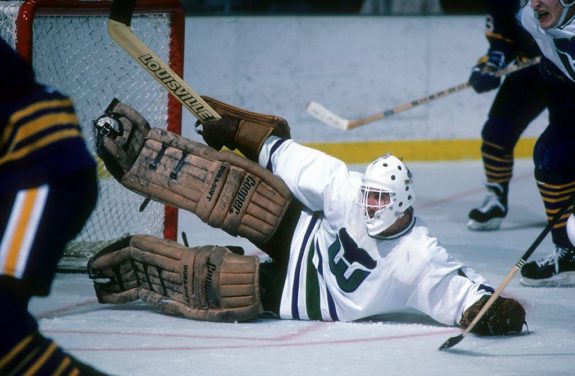
Liu, who had just turned 34, became expendable after Peter Sidorkiewicz took over the starting role for the Whalers. He came to the Capitals to shore up an unsettled position and played well in the regular season, as although his record was just 4-4, he posted a 2.14 goals-against average (GAA) and a .921 save percentage (SV%), the only Capitals goalie to finish above the .900 mark. He was also fourth in All-Star voting and fifth in Vezina Trophy voting despite appearing in just 37 games in the regular season (with Hartford and Washington).
Splitting time with Don Beaupre heading into the playoffs, Liut was best in the Patrick Division Final against the New York Rangers, taking over in Game 3 after Beaupre left with an injury. Taking over with the series knotted at one apiece, Liut allowed just five goals on 80 shots in the next three games, including a 30-save effort in an overtime win in Game 5 at Madison Square Garden that gave the Capitals their first – and only – division title.
Liut proved to be a valuable insurance policy and helped the Caps advance to their first-ever Wales Conference Final. He remained a Capital for two more seasons, and while he didn’t quite duplicate his first season with the club, he still posted a 23-23-5 record in his last two seasons with Washington and was a reliable backstop.
As for Corriveau, Washington’s first-round pick in the 1985 NHL Draft, he appeared in 114 games in five seasons with Hartford, scoring 22 goals. He briefly became a Capital again – as the player to be named later in the trade for Nick Kypreos in August 1992 – but was claimed by the San Jose Sharks off waivers before the 1992-93 season. During that campaign, he was again the player to be named later, going back to Hartford in the deal for Michel Picard three months earlier.
4) March 1, 1997: Washington Acquired Adam Oates, Bill Ranford and Rick Tocchet From Boston for Jason Allison, Jim Carey, Anson Carter and a Third-Round Pick in the 1997 Entry Draft (Lee Goren)
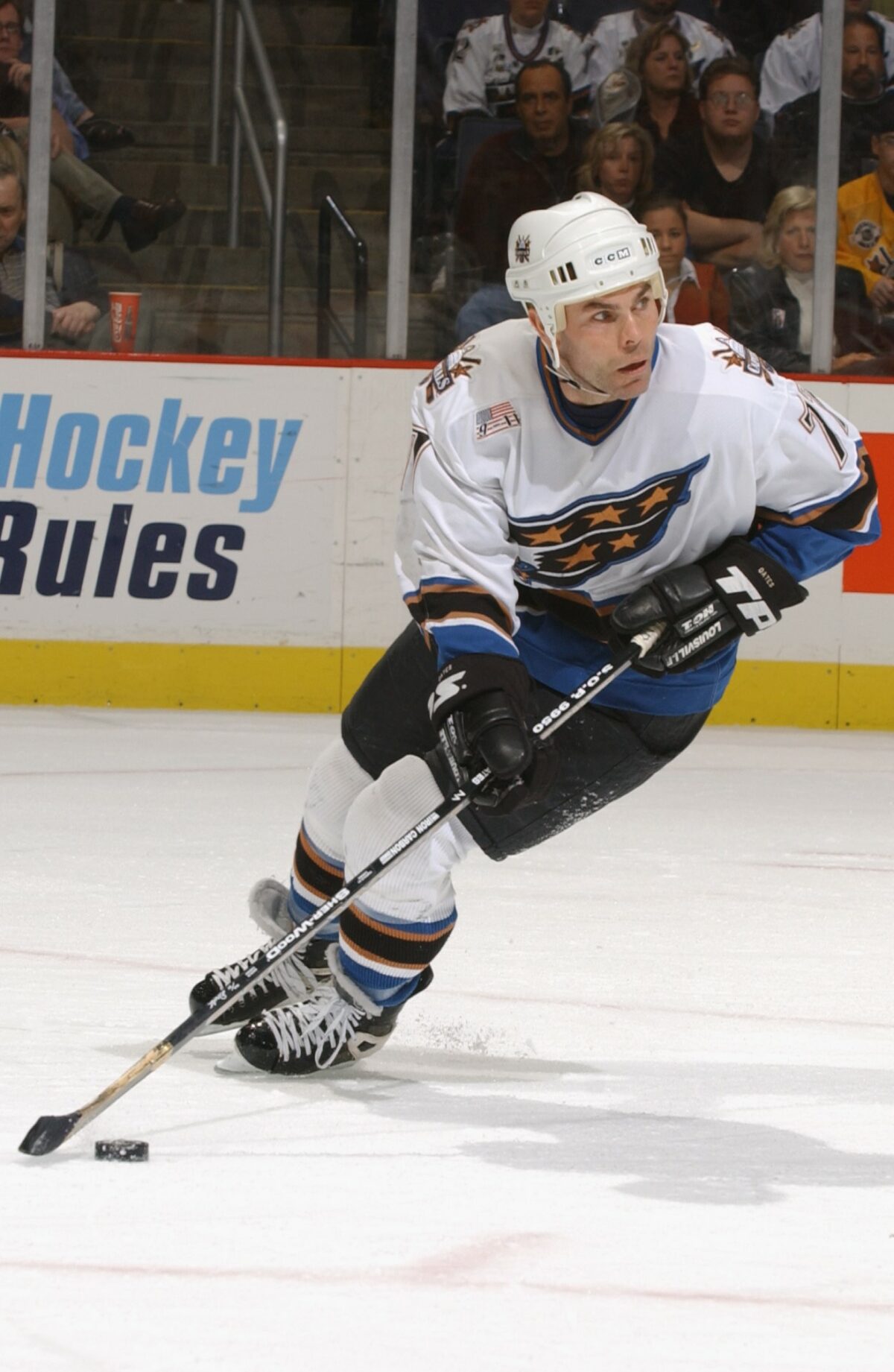
This deadline deal had a long-term payoff for the Capitals, but the short-term result wasn’t what Poile wanted, and it turned out to be the GM’s last trade in Washington.
The Capitals’ long playoff streak dating back to 1982-83 was in jeopardy, and on the day of the trade had a 24-31-7 record, just out of a playoff spot, and Poile wanted to shake up the roster. The Boston Bruins, who also were in danger of having their own playoff streak snapped, wanted to do the same.
At the time, Washington netminder Jim Carey was the reigning Vezina winner but had struggled badly in 1996-97, with a 17-18-3 record and a .893 goals-against average. Adam Oates had 70 points in 63 games with the Bruins, but as Boston faded from the playoff chase and the future Hall of Famer wanted the team to upgrade their lineup or trade him, Boston GM Harry Sinden sent him to the Capitals.
It was called the biggest NHL trade since Eric Lindros in 1992. The Capitals got veterans Oates, goaltender Bill Ranford, and veteran forward Rick Tocchet, while the Bruins got younger players, Carey and forwards Jason Allison and Anson Carter.
Oates held out for a game since he wanted a new contract before suiting up for the Capitals. The game he missed was a 2-0 loss to the New York Islanders that cost them a playoff berth – they missed the postseason by two points – and Poile was fired after the season. Boston also ended up missing the playoffs, and Carey never found his Vezina form again, playing just 19 games with his hometown Bruins and 23 in his NHL career.
The following season, however, the trade paid dividends for Washington. Tocchet left as a free agent, and Oates and Ranford were key to helping the team capture the 1997-98 Eastern Conference championship; Oates recorded 18 goals and 76 points in the regular season and 17 points in 21 playoff games to help the Capitals reach the first Stanley Cup Final in club history. Ranford was an effective backup to Olaf Kolzig, appearing in 22 games and posting a .901 SV%.
Allison and Carter went on to have fine careers; Carter even returned to Washington for a brief stint in 2003-04. But Oates settled in and became an important player for the team in the late 1990s and one of the keys to the franchise when they moved to the District of Columbia from Landover before he became the team’s head coach from 2012 to 2014.
3) March 4, 1994: Washington Acquired Joe Juneau From Boston for Al Iafrate
Another key piece to Washington’s 1998 Stanley Cup Final run was picked up four years earlier in another trade with Boston when the Capitals acquired a third-year center for a veteran defenseman with a cannon of a shot.
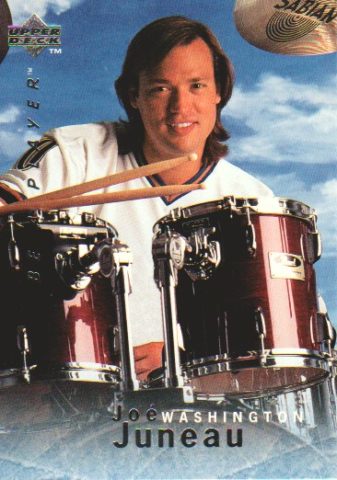
Joe Juneau had 58 assists and 72 points with the Bruins before his trade in the 1993-94 season, helping set up Cam Neely’s third and final 50-goal campaign in Boston along with powering Oates’ 112-point season.
Washington wanted more offense on a team that had struggled against the Islanders in a six-game first-round loss the season before, and Poile took a shot at acquiring Juneau for Al Iafrate, who had 10 goals and 45 points with Washington before the trade.
Immediately after the deal, Juneau had 13 points in 11 games and nine points in 11 postseason games – including seven points in six games in Washington’s first-round upset of the Pittsburgh Penguins, the Capitals’ only win over their rivals before the 2018 second-round series.
While Juneau never really duplicated his strong regular seasons, he did record 41 points in 44 postseason games for the Capitals, including one of the franchise’s biggest goals, an overtime marker in 1998 against the Buffalo Sabres in Game 6 of the Eastern Conference Final to send the team to their first Stanley Cup Final. That was the fourth overtime goal and second series-clinching goal for Juneau that playoff run; he had seven goals and 17 points in the 1998 postseason.
As for Iafrate, he spent just 12 games with the Bruins. He started off well, recording five goals and eight assists in the remainder of the regular season and added four points in 13 postseason games. However, back and knee injuries caused him to miss the next two seasons, and Iafrate played just 59 more NHL games with the Sharks after the 1996 trade with Boston.
2) February 28, 2008: Washington Acquired Sergei Fedorov From Columbus for Theo Ruth; Washington Acquired Cristobal Huet From Montreal for a Second-Round Pick in the 2009 NHL Draft (Traded to Atlanta)
While the Capitals had designs on returning to the playoffs when the 2007-08 season began, a 6-14-1 start took them out of the playoff picture early, and by the end of February, the Caps were still five points out of the playoffs.

The team responded to the promotion of head coach Bruce Boudreau from the Hershey Bears on Thanksgiving Day, with a 23-13-7 record after the change, Capitals GM George McPhee made a pair of trades before the deadline, acquiring goaltender Cristobal Huet from the Montreal Canadiens and forward Sergei Fedorov from the Columbus Blue Jackets.
Supplanting longtime starter Kolzig, Huet was terrific down the stretch, going 11-2-0 in the regular season, along with a 1.63 GAA and a .936 SV% and two shutouts in 13 games. Thanks to his stellar goaltending, Huet won his last nine starts of the regular season, and Washington edged the Carolina Hurricanes for the Southeast Division title on the last day of the regular season, putting the Capitals in the playoffs for the first time in five years, and the first time during the Alex Ovechkin era.
With no room for error in the standings, the Capitals wouldn’t have qualified without Huet, as veteran incumbent Kolzig was not as effective after years of standing up behind a weaker defense. Huet left for the Chicago Blackhawks after the season, and while he was solid over two years with a .902 SV% in the Windy City, he didn’t duplicate his run of success in Washington. Kolzig also ended up leaving the Capitals, signing a free-agent deal with the Tampa Bay Lightning, where he appeared in just eight games.
Federov stuck around the next season as well and was a good influence on his fellow Russians, Ovechkin and Alex Semin. He posted 13 points in 18 games as a Capitals down the stretch in 2008, then signed a one-year deal to return for the 2008-09 campaign. That turned out to be his final NHL season, and Fedorov notched 33 points in 52 games.
His final goal as a Capital was one of the franchise’s most memorable; a third-period tally in Game 7 of Washington’s first-round series against the Rangers that proved to be the series winner, breaking a 1-1 tie and leaving the stands of the Verizon Center thrilled that the Capitals had won their first playoff series since Juneau’s goal in 1998.
Fedorov headed to his native Russia after that season, while Theo Ruth, the player he was traded for, never appeared in an NHL game, spending four years in the American Hockey League and part of a year in the ECHL.
1) March 7, 1989: Washington Acquired Dino Ciccarelli and Bob Rouse From Minnesota for Mike Gartner and Larry Murphy; Washington Acquired Calle Johansson and a Second-Round Pick in the 1989 NHL Draft (Byron Dafoe) From Buffalo for Clint Malarchuk, Grand Ledyard and a Sixth-Round Pick in 1989 NHL Draft (Brian Holzinger)
The 1989 trade deadline produced a pair of trades that shaped the Capitals for years to come, as Poile shook up a team that had struggled in the playoffs to score goals. Three future Hall of Famers changed teams in the deal, as Washington acquired Dino Ciccarelli from the Minnesota North Stars, along with defenseman Bob Rouse, in exchange for longtime Capital Mike Gartner and Larry Murphy.
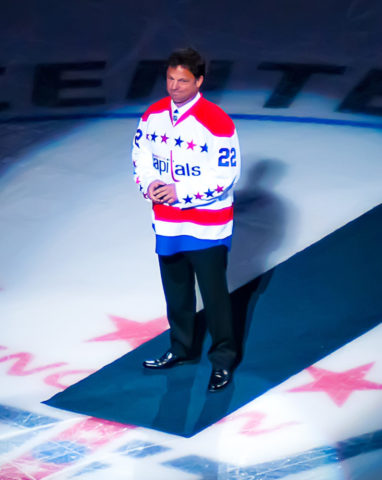
Ciccarelli was terrific in his first month as a Capital, scoring 15 points in 11 games, including a franchise-record seven-point night in Hartford in just his fifth game with the club. He was the spark plug Poile thought he’d be, helping the Capitals win their first – and only – Patrick Division regular-season title. Washington was two points shy of the division lead at the deadline and ended up finishing atop the division by five points.
While Ciccarelli recorded six points in six games in a first-round loss to the Philadelphia Flyers, he really showed his playoff mettle the following spring. He notched eight goals in eight games of the 1990 Playoffs, including a hat trick in the playoff opener against the New Jersey Devils at the Meadowlands, which was capped off by the overtime winner as Washington advanced in six games. While he was injured in the second-round win over the Rangers, he proved to be the clutch scorer Poile was looking for.
Ciccarelli had 112 goals and 209 points in 223 regular-season games in Washington, along with 35 points and 21 goals in 31 playoff contests, spending four years of his Hall of Fame career with the team before being traded to the Detroit Red Wings in 1992 for Kevin Miller in one of the least popular trades in franchise history.
Poile also made another deal, acquiring defenseman Calle Johansson from the Buffalo Sabres, which gave the Capitals a blueliner who remained with the organization for 15 seasons, playing 983 games with Washington – third-most in franchise history.
Johansson, who was in his second season with the Sabres and was named to the NHL’s All-Rookie team the season before. He became a solid blueliner, who was not only part of the Capitals team that reached the Wales Conference Final in 1990 but also advanced to the Stanley Cup Final in 1998. The Swedish lynchpin was a smooth skater who hardly missed time with injury, and was a steady contributor both offensively and defensively.
The second-round pick Washington acquired from Buffalo also became a significant NHLer, although he spent most of his time with the Bruins. Byron Dafoe played in just 10 games for Washington, spending his time mostly with the team’s AHL affiliates, the Baltimore Skipjacks, and Portland Pirates. However, after a trade to the Los Angeles Kings in 1996 for a first-round pick that brought Washington Alexander Volchkov, Dafoe successfully made the leap to the NHL, playing in 405 more games for Los Angeles, Boston, and the Atlanta Thrashers, and earning a third-place finish in Vezina voting in 1998-99 with the Bruins.
As for Gartner and Murphy, both had extended careers after leaving Washington. Gartner played in 674 games, spending time with the North Stars, the Rangers, the Toronto Maple Leafs, and Phoenix Coyotes before retiring in 1998. He scored most of his 708 career goals as a Capital and had his No. 11 retired by the team in 2008, seven years after being enshrined in Toronto as a Hall of Famer. Murphy spent another dozen years in the NHL, winning two Stanley Cups with the Penguins and another two with the Red Wings, and had stops in Minnesota and Toronto, and was enshrined into the Hockey Hall of Fame in 2004.
Clint Malarchuk had an unfortunate stay in Buffalo, suffering a gruesome injury against the St. Louis Blues just 15 days after the trade when a skate sliced the jugular vein in his throat. He recovered and spent two more seasons with the Sabres. Grant Ledyard was a steady blueliner, spending five years in Buffalo before going to the Dallas Stars, Vancouver Canucks, Bruins, Ottawa Senators and Tampa Bay Lightning before his NHL career ended in 2002.
Capitals’ 5 Worst Trade Deadline Deals (1974-2016)
5) March 13, 2001: Washington Acquired Trevor Linden, Dainius Zubrus and a Second Round Pick in the 2001 NHL Draft (Traded to Tampa Bay) From Montreal for Jan Bulis, Richard Zednik and a First-Round Pick in the 2001 NHL Draft (Alexander Perezhogin)
Looking for an extended run in the 2001 Stanley Cup Playoffs, the Capitals picked up veteran forward Trevor Linden from the Canadiens, along with Dainius Zubrus, in exchange for a pair of the team’s young skaters and a first-round pick.
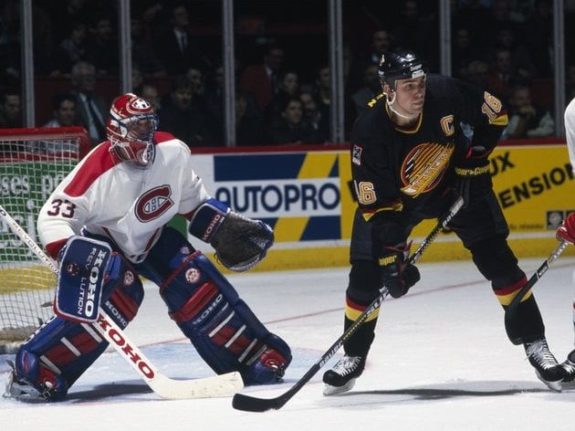
Linden recorded just four points in a dozen regular-season games and four assists as the Capitals lost in six games to the Penguins in the first round. The next season, he only had three points in 16 games and was dealt to the Canucks in November 2001 along with a second-rounder for a first-rounder that became Boyd Gordon.
While Linden was supposed to be the key piece to the Capitals’ playoff success, Washington received Zubrus, who kept this trade from being a total disaster for McPhee. He spent six seasons with the Capitals, notching 86 goals in 331 games. His best season was in Ovechkin’s rookie campaign when he scored 23 goals in 2005-06.
Jan Bulis scored 96 NHL goals, 70 with Montreal and Vancouver after the trade, while Zednik scored 98 goals in five seasons with the Canadiens and 33 more for the Florida Panthers and Islanders. Montreal also used Washington’s 25th overall pick to take Alexander Perezhogin, who spent two seasons with the club.
While Zubrus salvaged some of the deal for McPhee, losing a pair of fast skaters didn’t really improve the Capitals long-term, and just three years later, they headed into a full rebuild.
4) March 3, 2010: Washington Acquired Scott Walker From Carolina for a Seventh-Round Pick in the 2010 NHL Draft; Eric Belanger From Minnesota for a Second-Round Pick in the 2010 NHL Draft; Milan Jurcina From Columbus for a Conditional Draft Pick
As Washington was running away with the Southeast Division and Presidents’ Trophy by March in the 2009-10 season, McPhee made a trio of trades to bolster his roster for what everyone thought would be an extended playoff run for the powerhouse Caps. Instead, the three players Washington acquired didn’t contribute much and the team suffered a shocking upset to the Canadiens in the first round, and all three ended up elsewhere the next season.

The biggest name was Scott Walker, a one-time 25-goal scorer who had seven points during the Carolina Hurricanes’ playoff run in 2009. While Washington got him inexpensively, with a log jam among the high-powered forwards, Walker appeared in just nine regular-season games, and just one playoff game – 6:47 of ice time in the Game 7 loss at home to Montreal – and recording a goal and two assists in his total time with the Capitals. The loss proved to be his final NHL game, as Walker elected to retire after the season.
Eric Belanger was a bit more effective after being acquired from the Minnesota Wild for a second-round pick, scoring six points in 17 games with Washington, along with an assist in seven playoff games. While McPhee considered bringing Belanger back the next season, his agent leaked the Capitals’ interest to the press to put an end to that, especially since McPhee felt it hampered his ability to trade Tomas Fleischmann. Belanger ended up signing with the Phoenix Coyotes while Minnesota used the Capitals’ pick on Johan Larsson, who went on to play 473 NHL games – although just one with the Wild.
Milan Jurcina, who was traded from Washington to the Blue Jackets in December 2009, was sent back to the Caps for unknown compensation just over two months later. However, he didn’t appear in a game with Washington after suffering a sports hernia, and he went to the Islanders the next season.
While the three players were meant to bolster Washington’s playoff hopes, the moves didn’t pay off, and although they weren’t responsible for the Capitals’ shocking loss to the Canadiens – most of the damage was done by Montreal netminder Jaroslav Halak, who became a deadline acquisition four years later – they also didn’t do much to help their new club.
3) February 28, 2011: Washington Acquired Jason Arnott From New Jersey for David Steckel and a Second-Round Pick in the 2012 NHL Draft
One year after the Capitals were upset by Montreal, McPhee made a bigger splash, adding some veteran leadership and acquiring one of the prize trade targets, New Jersey’s Jason Arnott, who won a Stanley Cup with the Devils in 2000. While Arnott rejoined the Devils in 2010 from the Nashville Predators, he became available on the trade market after New Jersey fell out of contention.
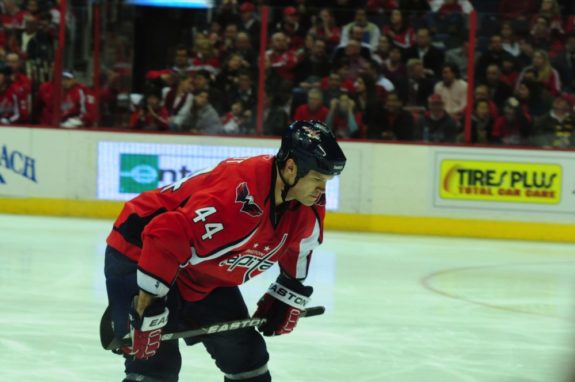
A Stanley Cup veteran, who appeared in a pair of Stanley Cup Finals, Arnott was brought in not only to bring leadership but also provide some goal scoring – he was just two seasons removed from a 33-goal season with the Predators. While he was better than the trio Washington brought in the year before, notching seven points in 11 games after opening the playoffs with three points in three games against the Rangers, he only scored three assists the rest of the way – two at the end of a Tampa Bay sweep.
The price McPhee paid was also higher with a second-rounder – the Devils traded the pick to Minnesota – along with David Steckel, a checking forward who played four more seasons with Toronto and the Anaheim Ducks. Arnott left to sign with the Blues in the offseason, and despite the hype, he ended up lighting the lamp just five times as a Capital in 22 games and had just one multiple-point game, the Game 4 loss.
2) March 14, 2014: Washington Acquired Dustin Penner From Anaheim for a Fourth-Round Pick in the 2014 NHL Draft
Another attempt to bring in a veteran Stanley Cup winner didn’t work out for McPhee in 2014. Dustin Penner, who won the Cup with the Ducks in 2007 and the Los Angeles Kings in 2012, didn’t even get a chance to suit up in the playoffs for Washington.
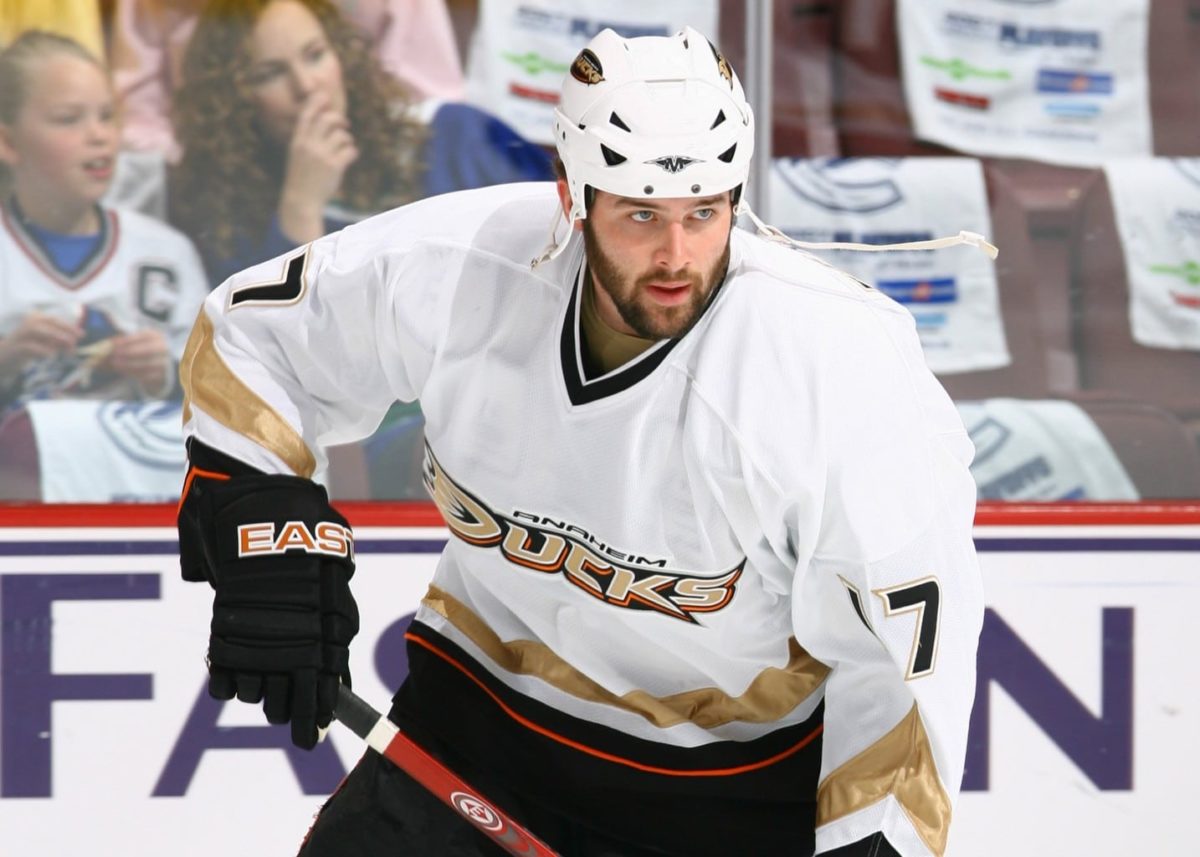
The Capitals were tied for the final playoff spot with the Red Wings the day before the deal was made, and with a chance to add a clutch playoff scorer, McPhee did so. Washington sent a fourth-rounder to Anaheim to rent Penner in the hopes he could deliver some big goals that spring.
Penner had an impressive playoff resume, scoring some key goals in the postseason, including the game-winner for the Ducks in Game 4 of the 2007 Stanley Cup Final against the Senators and notching the Western Conference Final-winning goal against the Coyotes in 2012 to put the Kings in their first Stanley Cup Final since 1993.
Washington had some internal issues during the 2013-14 season under Oates, and Penner, a former 30-goal scorer, only recorded one in 18 games as the team missed the playoffs for the first time since 2006-07 after a late-season slump. His only goal as a Capital came against the Kings on March 25, and then Penner went pointless in his last seven games as the team missed the cut by three points.
Years later, Penner said he suffered a broken neck after that game against Los Angeles but continued to play down the stretch. He filed a workman’s compensation claim after he didn’t return to the NHL after that season.
The trade proved to be one of McPhee’s last moves as GM, as he and Oates were fired after the team missed the playoffs.
1) April 3, 2013: Washington Acquired Martin Erat and Michael Latta From Nashville for Filip Forsberg
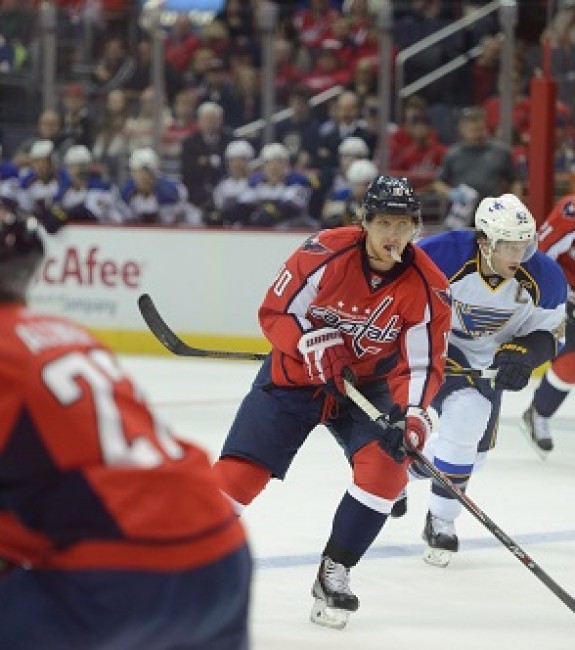
This trade is one that will raise Caps fans’ blood pressure. McPhee paid a steep price for what turned out to be a brief stay for Martin Erat when the team was looking to secure their spot in the 2013 Stanley Cup Playoffs.
Filip Forsberg had a strange relationship with the franchise, dating back to the 2012 NHL Draft. Just before he was selected in the first round, the Capitals called timeout to figure out why he fell to them with the 11th overall selection. Even though they selected him, he started his career with Leksand in the second-tier league in Sweden and the Capitals weren’t exactly sure what they had in Forsberg; he had just 15 goals in 38 games against less-than-stellar competition.
When McPhee wanted to get a disgruntled Erat – who had demanded a trade – from the Nashville Predators for a long-term stay with the Capitals, Poile obviously thought higher of Forsberg’s pedigree than McPhee and sent the veteran forward to the Capitals for Forsberg.
Since Erat was signed for another two seasons after the trade, McPhee was confident the deal would be worth it, losing a prospect they didn’t know would pan out for more than a rental player. While Washington qualified for the playoffs in 2013, Erat only had three points in nine regular-season games and was pointless in the team’s first-round loss to the Rangers.
The trade got worse for McPhee by November, as a disgruntled Erat demanded a trade out of town because he felt he wasn’t used properly.
“I want to be traded. We’ll see how it goes,” Erat told reporters. “Since day one, I didn’t get the chance here. I got traded here to be a top-six player but never got the chance, never played more than 15 minutes in here, and it’s time for me to move on” (from “Martin Erat asks Capitals to trade him,” The Washington Post, 11/25/13.
A year after acquiring Erat, he was sent to Phoenix for Chris Brown, Rostislav Klesla, and a fourth-round pick. Brown appeared in a dozen games with Washington, while Klesla never suited up for the club. Of course, Forsberg went on to become a star in Nashville, making his NHL debut shortly after the deal, and 10 years later, is still in the Music City and a big reason why the Predators reached the 2016 Stanley Cup Final.
As the trade fades into history, there is one silver lining. Had Washington held onto Forsberg, it’s unlikely they would have gone on to acquire T.J. Oshie from the Blues in 2015. Roster space and cap issues might have been much tighter with Forsburg on the roster, and he went into a situation where he was able to thrive. We can’t know if he would have had the same success with the Capitals, and when Washington lifted the Stanley Cup five years after the trade – no thanks to it – a lot of the angst about the trade went away.
Washington’s Last 5 Trade Deadlines, and What to Expect (2017-2022)
2017
With the Capitals near the top of the NHL standings at the trade deadline, Washington made a splash by picking up defenseman Kevin Shattenkirk on Feb. 27, sending Zach Sanford, Brad Malone, and a first-rounder in the 2017 NHL Draft to St. Louis for the blueliner and Pheonix Copley.
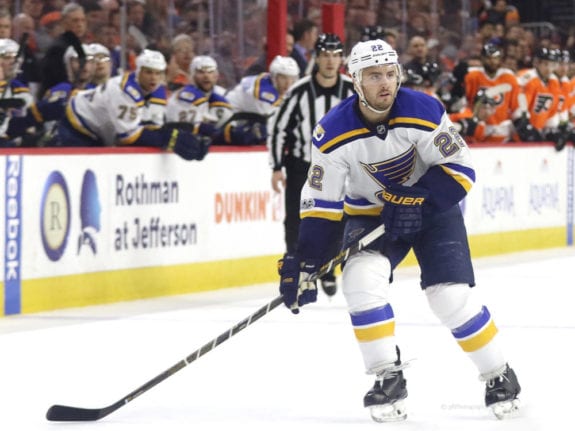
Shattenkirk was one of the most sought-after trade assets that spring, and with the Penguins pursuing him, Washington considered him an addition by subtraction from their rivals. Shattenkirk wasn’t bad with the Caps, notching 12 assists in 19 regular-season games, but he cooled off during the playoffs on a crowded blue line. He did have one memorable moment, recording a Game 3 overtime-winner in Pittsburgh, which kept Washington from falling into a 3-0 hole in a series that went to Game 7. That goal turned out to be his only playoff marker in Washington.
Shattenkirk left to sign with his hometown Rangers the following offseason. He was bought out after a disappointing stint in Manhattan but eventually won a Stanley Cup with the Tampa Bay Lightning in 2020.
Copley, who was a Capital farmhand before being traded in the Oshie deal in 2015, is still in the Washington system with the Bears and spent the 2018-19 season as Braden Holtby‘s backup in D.C. Sanford went on to become a regular NHL player with the Blues and was traded to Ottawa in September. Malone never suited up for the Blues but played 23 games for the Edmonton Oilers, most of his time with the Bakersfield Condors, Edmonton’s AHL affiliate.
2018
While the Capitals weren’t able to make a similar splash due to cap constraints, they picked up a valuable defenseman, getting Michal Kempny from the Chicago Blackhawks for a 2018 second-round pick on Feb. 19, 2018. The Caps also picked up Jakub Jerabek from Montreal for a fifth-rounder in 2019.
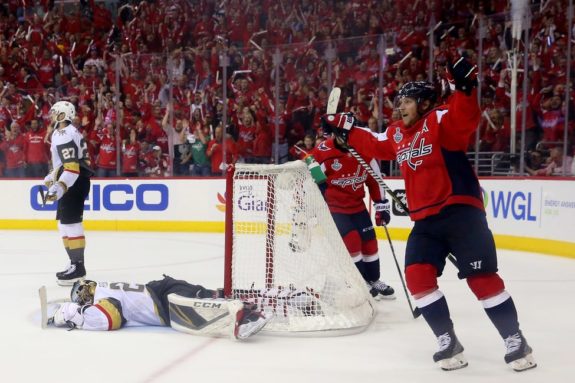
Kempny became a valuable depth defenseman for Washington after the trade, appearing in 22 games in the regular season and all 24 playoff games when the Capitals captured their first Stanley Cup. He also chipped in a pair of goals during some pivotal games, scoring in Game 1 of the Eastern Conference Final against the Lightning and another in Game 4 of the Stanley Cup Final against the Vegas Golden Knights – both wins.
Kempny’s value was emphasized the next season when he suffered an injury late in the regular season and missed the playoffs; Washington lost to Carolina in seven games. After a lengthy recovery, Kempny returned to form this past season and could become a key player if he’s healthy for the playoffs.
Jerabek played briefly for the Capitals, appearing in 11 regular-season and two playoff games before he was traded to the Blues for a sixth-round pick before the 2018-19 season.
2019
Washington made a pair of trades before the 2019 deadline, picking up Carl Hagelin from the Kings on Feb. 20 for a third-rounder, then two days later getting Nick Jensen from Detroit for Madison Bowey.

Hagelin has been a key penalty-killer for Washington and a defensive specialist with speed. He had 11 points in 20 games after arriving from Los Angeles but scored just an assist in the seven-game loss to Carolina in the postseason. He signed a four-year deal to remain in with the Capitals that offseason, and while his scoring touch has waned, he still is an important part of the team’s penalty kill.
Jensen struggled in his first weeks in Washington, recording just five points in 27 regular-season and playoff games and none in the postseason. While he was considered trade bait after a slow start with the club, the coaching change when Peter Laviolette was hired in 2020 proved to be a boost for the defenseman, and he went from a marginal defender to a valuable puck-mover.
Both are still parts of the Capitals lineup and will be looked to play key roles again this spring.
2020
Weeks before the pandemic interrupted the 2019-20 season, Washington made two deadline deals in hopes of another deep playoff run, getting Brenden Dillon from the Sharks for a second-rounder on Feb. 18, and Ilya Kovalchuk from the Canadiens for a third-rounder on Feb. 23.
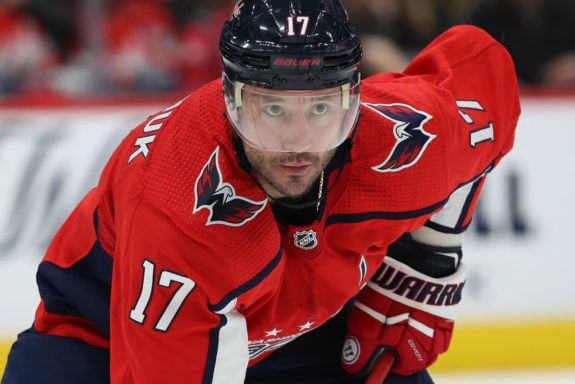
Dillon played in 10 regular-season games before the pause, while Kovalchuk played in seven, scoring a goal and three assists. Dillon was brought in to play tough defense, and Washington hoped Kovalchuk could rekindle his scoring touch playing alongside Ovechkin. The former was a success, the latter not so much. Kovalchuk had just one assist in the round-robin phase of the Toronto playoff bubble. He was scoreless in the Capitals’ five-game loss to the Islanders.
Dillon remained a Cap until this last offseason, a rough customer for opposing forwards. He was eventually traded to the Winnipeg Jets for cap relief, and the pick acquired helped the Caps get Vitek Vanecek back from the Seattle Kraken after the expansion draft. Kovalchuk returned to the KHL after his brief stay in Washington.
2021
With the shortened 56-game schedule in 2020-21, MacLellan used the deadline to try and improve the Capitals long-term, acquiring Anthony Mantha from Detroit for Jakub Vrana, Richard Panik, and a first-round pick, paying a price for a player under contract until 2023-24. Washington also picked up Michael Raffl from Philadelphia for a fifth-rounder.
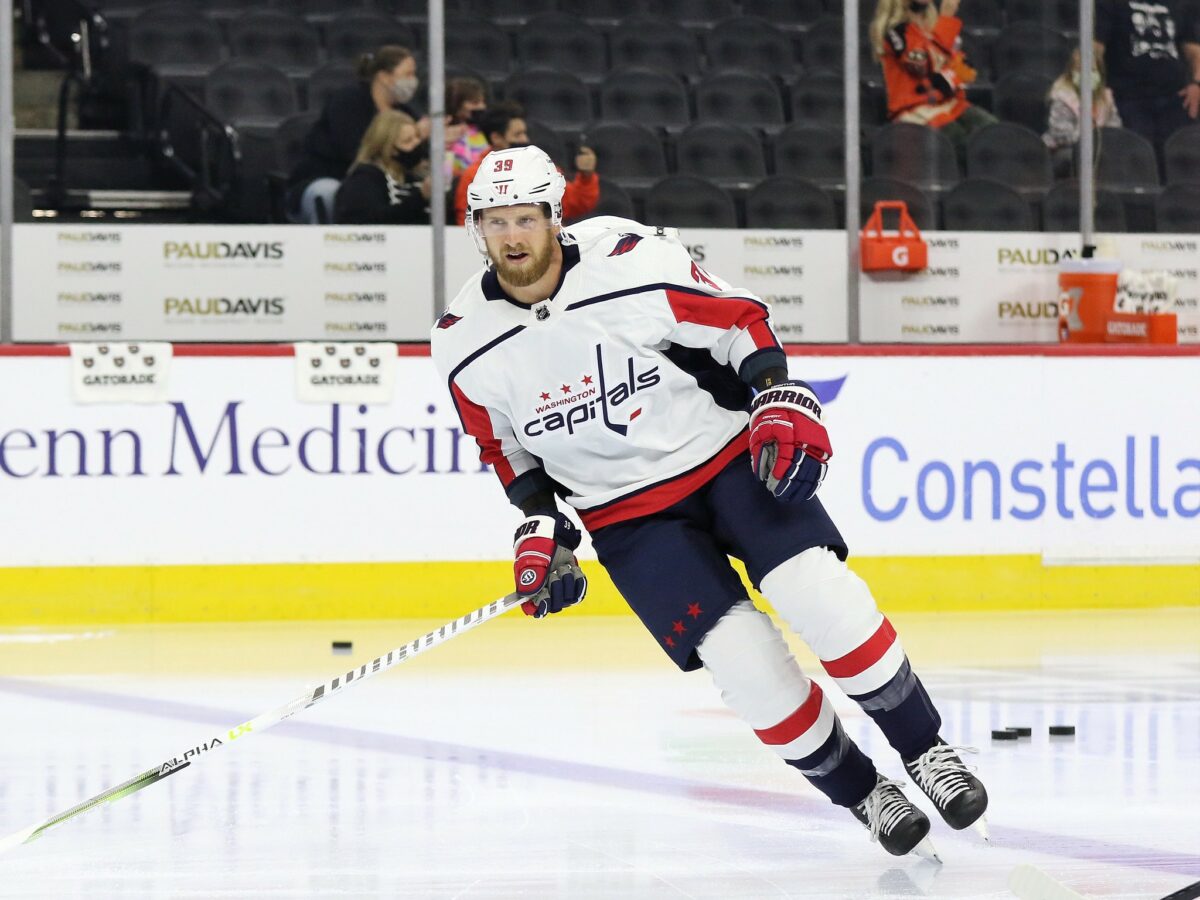
Mantha had a quick start, scoring four goals and four assists in 14 games, but he was held to just two assists in Washington’s first-round loss to the Bruins. Raffl had a goal and two assists in 10 games but was pointless in four playoff games.
While Mantha remained a Cap into this season, he was injured after 10 games and likely is out for the bulk of the regular season, which could allow MacLellan to be more aggressive at this year’s deadline given the extra cap space. As for Raffl, he signed a one-year, $1.1 million deal with the Dallas Stars this past offseason and has been a regular there this season.
2022 Forecast
What will the Capitals do at this year’s deadline on March 21? MacLellan has a history of making aggressive moves and with some available space (while Mantha is still out), he will have more flexibility to make moves this year.
First on Washington’s list will likely be a goaltender, and while the Capitals briefly lost Vanecek to the Kraken last summer, it seems likely another Washington netminder will be dealt this spring. Ilya Samsonov has never really taken the starting role vacated by Holtby. His one-year, $2 million deal expires after this season when he becomes a restricted free agent, so he could be headed out if the Capitals get a netminder. Samsonov has shown flashes of upside during his tenure, but mostly he’s been inconsistent.
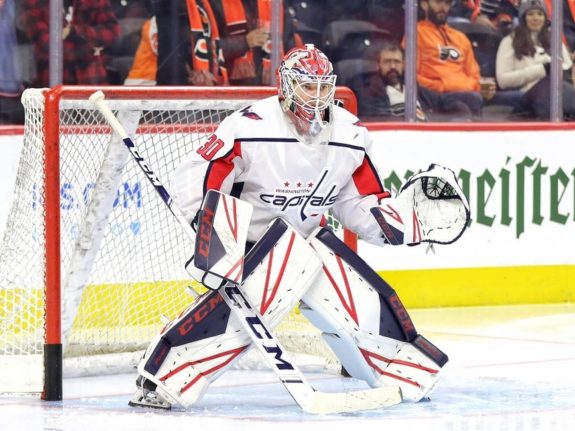
Vanecek may bring a bit more of a return with a cap-friendly salary of $716,667 this season, making him affordable for most teams – one of the reasons he was picked by Seattle – but he also seems likely to get more playing time under Laviolette.
Washington will likely target a rental for the playoffs. Old playoff foe Marc-Andre Fleury will be available, but his price tag is probably going to be steep. They might also consider bringing Holtby back for one more run, but his play has been inconsistent since his 2018 Playoff run. Should Washington target a player with term, as MacLellan sometimes does, the price will be higher and will have to fit into the future salary cap structure, which Washington hasn’t paid a great deal for in recent years with two young goalies, but that will change when both become RFAs this summer and deserve raises.
The other target will probably be trying to add another top-six forward, particularly after injuries have shredded the team’s offensive depth. The Capitals’ reported interest in Evander Kane – before he signed with the Edmonton Oilers – tipped MacLellan’s hand, and he could be interested in adding a forward, although goaltending is the primary need, so it’s likely to be a depth move.
Related: Capitals’ Roster Changes May Loom After January Slump
Either way, with some cap space to play with and Washington’s window for another Stanley Cup seemingly closing, you can figure it won’t be a quiet deadline.
